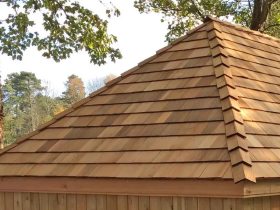Roof gardens have become increasingly popular in urban areas as a way to maximize space utilization and bring nature into the concrete jungle. These elevated green spaces offer a unique blend of aesthetics and functionality, providing numerous benefits to both the environment and the people who enjoy them.
The Aesthetic Appeal of Roof Gardens
One of the primary reasons why roof gardens are so attractive is their aesthetic appeal. The lush greenery, colorful blooms, and serene atmosphere create a peaceful oasis in the midst of busy city life. The sight of a well-designed roof garden can instantly uplift the mood and provide a welcome respite from the urban hustle and bustle.
Roof gardens also add visual interest to the surrounding landscape, transforming drab rooftops into vibrant and inviting spaces. Whether viewed from nearby buildings or enjoyed from within the garden itself, these elevated green spaces enhance the overall aesthetic of the urban environment.
The Functional Benefits of Roof Gardens
Beyond their beauty, roof gardens offer a range of functional benefits that make them a valuable addition to any building. One of the most significant advantages is their ability to improve air quality by absorbing carbon dioxide and releasing oxygen into the atmosphere. This not only benefits the immediate surroundings but also contributes to the overall health of the city.
In addition to their environmental benefits, roof gardens can also help to regulate indoor temperatures and reduce energy consumption. By providing an extra layer of insulation, these green spaces can help to keep buildings cool in the summer and warm in the winter, thereby lowering the need for heating and cooling systems.
Designing a Successful Roof Garden
Creating a successful roof garden requires careful planning and attention to detail. Factors such as sunlight exposure, wind patterns, and weight-bearing capacity must be taken into account to ensure the longevity and viability of the garden. Additionally, selecting the right plants and incorporating elements such as seating areas, pathways, and water features can enhance the overall functionality and appeal of the space.
- Choose plants that are well-suited to the rooftop environment, such as succulents, grasses, and drought-tolerant species.
- Consider installing irrigation systems to ensure that the plants receive an adequate water supply, especially during hot and dry periods.
- Incorporate seating areas and pathways to create a comfortable and inviting space for relaxation and socializing.
- Include elements like trellises, pergolas, and arbors to add vertical interest and create a sense of enclosure within the garden.
Roof gardens offer a unique opportunity to blend aesthetics and functionality in urban environments. By combining lush greenery with practical design elements, these elevated green spaces can enhance the beauty of the cityscape while providing numerous benefits to the environment and the people who enjoy them. Whether you are looking to create a peaceful retreat or a vibrant social hub, a well-designed roof garden can transform any rooftop into a thriving oasis above the city.





